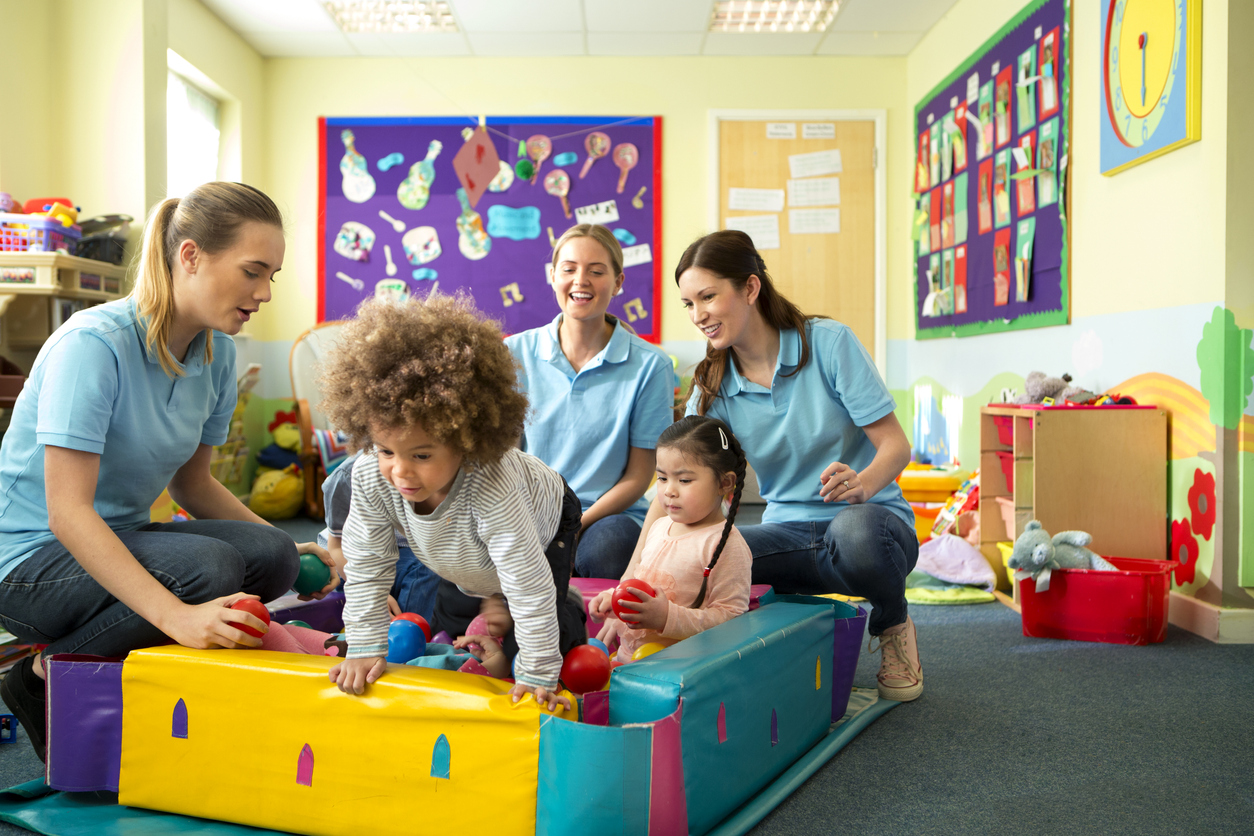Supporting children with additional learning needs

The setting has powerful examples of children transferring to a local special school with so many more life skills developed with Standing to Grow.
Information about the setting
Standing to Grow is a sessional day care setting registered to provide childcare and education for 32 children daily. The setting is registered with Care Inspectorate Wales and Estyn. Currently having 53 children, 17 of these receiving education funding including five children receiving the education support package of 12 hours and one receiving 10 hours additional support, all with an IDP. The setting is situated in a small community village and transitions children into nine different schools from up to 10 miles away. English is the first language at home for all of its children. However, Standing to Grow introduces the Welsh language and Makaton to all its children.
The setting’s vision is to provide the best quality care at an affordable cost for families. The setting is inclusive and sensitive to everyone’s wants and needs. Practitioners provide a free snack to all children and offer an open-door policy to all of the parents / guardians.
Context and background to the effective or innovative practice
Standing To Grow is one large room, divided into three separate areas to ensure that all wants and needs are met for all children, and all resources are purposeful to meet the age and stage of all children. One area is the Bumblebee area. This is a quieter space filled with sensory resources to meet individual children’s needs and schemas. There is a climbing frame, spinning chair, rocking chair, soft play and wall mounted activity board used to help children regulate. There is a team of three staff who are based in this area every day. Staff are responsible for providing additional support to individual children and plan activities tailored to individual children’s IDP’s and targets. Practitioners gather this information from daily observations, Wellcomm assessments and the Welsh Government Assessment Arrangements for funded non-maintained nursery settings. The same key workers with significant experience and knowledge support children according to their holistic developmental needs. The key workers placed in the Bumblebee area are always on hand to support other practitioners to develop a shared language and understanding of how best to support children’s individual needs. This may be through support with knowledge and theoretical perspectives, or through practical ideas and strategies to support children when they choose to access the main playroom. Staff tailor the interventions, adult-initiated and child-led play and learning.
Description of nature of strategy or activity
The team recognises that many children attend the setting with emerging needs, behaviour needs, sensory needs and speech and language delays. Practitioners established the Bumblebee area to support all children as and when they need it. The Bumblebee area is a smaller space, located just off the main playroom of the setting. The playgroup offers a free flow routine where all children are able to access the Bumblebee room if they wish. The area is still within view of the main playroom, so that children can still see and hear their peers and routines of the main playroom. However, practitioners find that children with IDPs prefer to spend time in this area, and settle well into daily routines. The children are given time to explore and develop in an age and stage appropriate way. There is an unhurried approach to supporting children to develop. The children still have opportunities to engage with all the play and learning activities, both indoors and outdoors, that the setting provides for all children. Practitioners adapt their approach to individual children’s needs, and encourage and support their confidence and learning.
What impact has this work had on provision and children’s standards?
The setting has powerful examples of children transferring to a local special school with so many more life skills developed with Standing to Grow. When they transferred, the child was dependent on using a push chair. Having only used pushchairs to transport some children to our outdoors, practitioners discussed with the parents that they would start without a pushchair and replace it with a child’s rocking chair to support their regulation. One year on, after using the same routine, activities and real objects to encourage communication and understanding, children sit in the rocking chair only when they need to regulate. They leave the chair and explore the environment. They understand that the tablecloth is the ‘real object’ sign for snack time and sit by the table and eat their own snack next to friends. They walk in and out of playgroup, meeting their parents by the door. Practitioners see this as very significant progress, and parents share how our work supports their routines at home.
Children learn that, when they become overwhelmed, they can make their way into the Bumblebee room for some regulation and return to their friends in their own time. Initially staff were helping them recognise their emotions but after a year they now independently identify when they need to go to the Bumblebee room.
How have you shared your good practice?
The setting shares its work with the local authority advisory team and receives regular visitors who observe and comment on the positive way children develop through the support and experiences they receive at the setting.